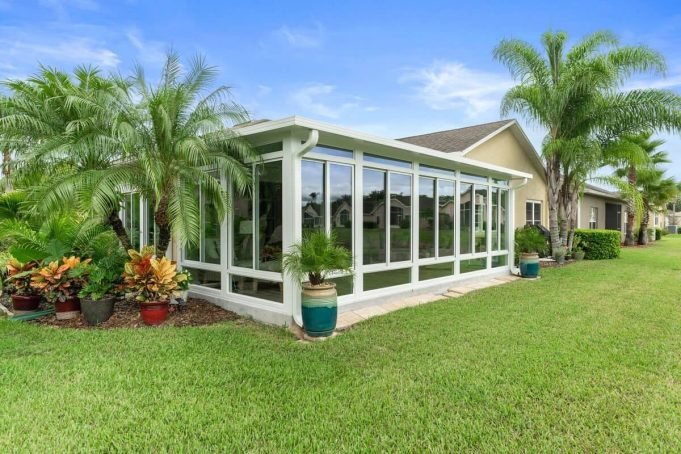A patio enclosure can be an ideal solution when you want to enjoy the outdoors while staying safe. With a patio enclosure, you can eat, relax, and entertain on your patio knowing you and your guests are protected. Here is what to know before you purchase patio enclosures to maximize your outdoor space:
Patio Enclosure Materials
Your patio enclosure’s cost, appearance, performance, and durability depend on your chosen material. It helps to consider the pros and cons of each material to determine its suitability. Here are the commonly used patio enclosure materials:
1. Wood
It gives your patio a natural, timeless appeal. Wood patio railings are sealed to prevent moisture damage and come in multiple colors and finishes. Simply brush off the dust that accumulates on the surface of the enclosure to keep it clean. Schedule regular inspections to check for wood rot and insect damage and repair any damage before it becomes extensive.
2. Vinyl
Vinyl enclosures are lightweight and low maintenance. You will never have to repaint your vinyl patio enclosure, and you only need to clean it with a garden hose and mild soap. Vinyl is resistant to weather and insect damage and does not rot or chip.
Read More: Steps to Selling Your Business
3. Aluminum
Aluminum provides superb protection from the elements and does not warp or rot. It can also be naturally resistant to insect damage. Aluminum retains heat, which makes it a good option for colder evenings by keeping you warm while you enjoy the views.
Patio Enclosure Costs
Patio enclosures range in price depending on your area’s material and labor costs. The size of your patio will also determine its cost. The larger your patio enclosure, the higher its price since you have to use more material. Consult a patio enclosure expert to determine your preferred patio’s material and installation costs.
Patio Enclosures for Different Purposes
How you plan to use your patio enclosure determines its material, design, and placement. If you’re planning to grill out on your patio, you’ll want a material that won’t melt, so aluminum or wood is a good option.
Vinyl or wood slats for your porch allow a spring or summer breeze to cool off the porch, making it a great place to relax and enjoy your view. If you have young children, you’ll want to make sure the spacing is narrower to keep them safe while they play outdoors.
Patio Enclosures for Different Climates
If you live in an area with a lot of wind and rain, you may want to invest in a more durable patio enclosure like aluminum. A material like wood may not be suitable for a place with a lot of rain as it is vulnerable to moisture.
Use wood or vinyl railings in hotter areas because they do not absorb as much heat as aluminum. They would allow you to enjoy a cooler outdoor space for entertaining. If you want a small garden on your porch, these options would allow sunlight in for your plants.
Required Building Codes and Permits
You need a building permit when installing a patio enclosure because it requires construction. Local councils provide permits to verify that new structures are installed according to building codes and safety standards.
Some aspects of patio enclosures covered by building codes include the height, dimensions, and differences in material and structures. You may also find that different regulations apply to each patio enclosure material.
With all these regulatory requirements, it helps to reach out to your municipal council to find out the local building codes and required permits. A local patio enclosure contractor should know all the local codes. A professional also has the necessary licenses for patio enclosures in your area. They can help you choose a railing that meets the safety standards.
The Best Patio Enclosure for Your Home
Purchasing patio enclosures can be the best way to enhance and protect your outdoor living space from the elements. Before making a purchase, several important factors must be considered, including the type of enclosure, material, installation process, and local building codes.
By taking the time to research and evaluate your options, you can select a patio enclosure that meets your needs. They’ll help you fit your budget and enhance your home’s appeal.










![What Does Aviates Stand for in Aviation? [The Art of Flying] Aviates](https://tourinplanet.com/wp-content/uploads/2024/07/Aviates-100x75.jpg)














![25 Best Peruvian Foods You Must Try In Peru [With Recipes] Peruvian Food](https://tourinplanet.com/wp-content/uploads/2024/07/Peruvian-Food-100x75.jpg)


